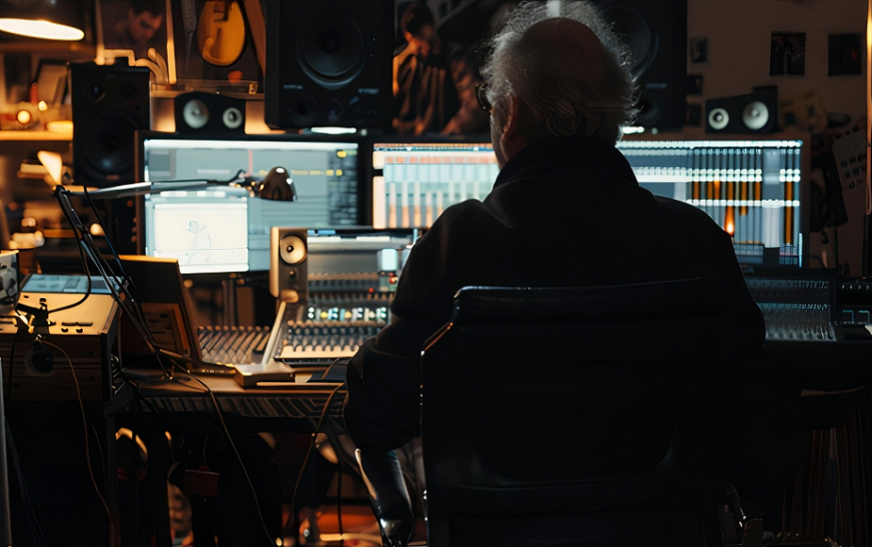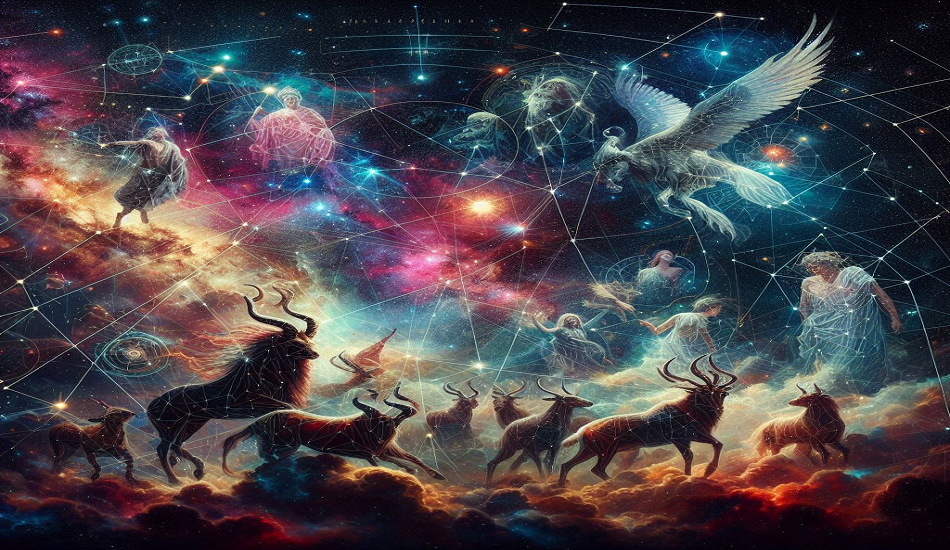Classical compositions profoundly impact film editing, interweaving music with cuts and transitions for standout cinematic sequences.
From the swelling crescendos in Star Wars to the frenetic strings in Psycho, classical music strikes a profound emotional chord in some of cinema’s most iconic scenes. But the symphonies, concertos, requiems, and more than accent films play an even greater role than setting the mood. Classical compositions are deeply interwoven with the pacing, rhythm, and editing of standout movie moments.
When skillfully incorporated by directors and editors, these melodious masterpieces become inextricable from the push and pull of the editing. The rises, falls and punctuations of classical works profoundly complement cuts, transitions, fades, and all manner of cinematic sequencing. Through this choreography between composition and editing, the music itself appears to take on a vital, dynamic visual language all its own.
So how exactly does this alchemical process occur in exceptional films? What inspires great filmmakers to lean heavily on classical as their scoring muse? And what editing techniques do they employ to fuse music so seamlessly with cinema? Let’s dive deep into the multifaceted impact of classical music on movie editing magic.
The Early History of Cinematic Editing and Music
Long before CGI or surround sound, early filmmakers were experimenting with groundbreaking editing techniques. Innovators like D.W Griffith realized editing could be used for far more than cleanly splicing scenes together. With rapid cuts between perspectives, Griffith ratcheted up dramatic tension in chase sequences and climactic conclusions.
Other editing pioneers like Sergei Eisenstein tinkered with juxtaposing imagery through montage editing. This laid the foundation for future directors to experiment with sequencing visuals to complement musical cues.
But what about the music itself in those early days? Oddly enough, live orchestras and pianists would often be present during early theater viewings. They’d provide an ever-shifting score tailored on-the-fly to what audiences were seeing on the screen. Once “talkies” with synchronized sound began dominating in the late 1920s, musical accompaniment became permanently interlaced with cinema’s DNA.
Soon iconic scenes were indelibly paired with classical compositions still recognizable today:
- In Walt Disney’s Fantasia, animated sequences were beautifully timed with the rises and dips of songs from Beethoven, Tchaikovsky, Stravinsky, and more.
- The thunderous “Ride of the Valkyries” sequence in Apocalypse Now as helicopters descend through smoke and shadows to attack.
- The blood-curdling violin shrieks in Hitchcock’s Psycho echoing with each slash of the knife.
- Strauss’ epic opening sunrise fanfare in Kubrick’s 2001: A Space Odyssey instantly sparked wonder.
Over decades of evolution, music evolved from a background element to a central character itself. Modern master filmmakers like Spielberg, Nolan, and John Williams expanded on these classical pairings, incorporating iconic symphonies, concertos, operas, and requiems as the lifeblood of pacing, mood, and tension.
Now let’s examine exactly how classical music became inextricably interwoven with editing rhythm itself…
Matching Cuts and Transitions to Musical Punctuations
Visionary directors discover that certain emotional classical compositions lend themselves perfectly to editing sequences to heighten engagement. This often involves matching cuts, fades, montages, and other transitions to the natural crescendos, decrescendos, staccatos, and accents within the music.
Just as a symphony builds tension through the orchestra gradually adding instruments and increasing tempo, skillful editing ratchets up anticipation by decreasing shot length and increasing cut frequency. When done in tandem with music, this compounds suspense, excitement, and emotional stakes through the synergy of sight and sound built to a breaking point.
Take for example the iconic “shower scene” from Alfred Hitchcock’s Psycho:
- Bernard Herrmann originally scored it without music, featuring only the sounds of shrieking violin strings with each slash of the knife.
- But Herrmann lobbied Hitchcock to include his anxious composition, arguing it would heighten the terrifying impact.
- The dissonant violins screech in harmony with the rapid-fire editing. Quick cuts between the knife, blood circling the drain, and Janet Leigh’s horror communicate her pain and desperation.
- The editing mirrors the violence of the music itself, creating a nightmarish marriage of sight and sound almost too horrible to watch.
We see similarly visceral symmetry late in Spielberg’s Jaws as Chief Brody chums behind the boat, shark fast approaching:
- John Williams’ iconic two-note score builds tension as the editing cuts faster and faster between Brody’s nervous face, the bloody bag of chum, the barrel he’s perched on, and the approaching shark fin.
- The escalating tempo of the music matches each decrease in shot length, building nail-biting anticipation of the impending scare.
Both demonstrate the almost supernatural power when edits and transitions are treated like musical notes and choreographed in sinister harmony with a composition.
This technique has its roots in the Soviet montage filmmaking style which often utilized contrasting imagery edited rapidly to provocative classical music selections. Their jarring visual sequences sought to mirror the punctuated rhythms and sometimes shocking tonal shifts within emotional orchestral works.
So just as compositions could crescendo from soothing passages to furious horns, Soviet editing could smash cut from babies cooing to machinery-crushing metal, all in synchronization with the music. This discordant sight and sound contrast creates an unsettling mood that leaves the audience jarred, reflective, and ideally transformed.
Modern master directors build on these montage concepts, incorporating both matching and mismatching music to heighten emotional impact. Let’s explore how musical selections themselves profoundly impact cinematic mood and tone…
Matching Music to Scene Type, Mood and Emotion
Beyond just matching the technical cuts and rhythm, truly gifted directors also select music that complements the intended tone, character emotion, and scene type. Somber classical pieces accentuate melancholy moments. Bombastic fight song snippets accompany epic battle sequences. And ethereal compositions underscore fantasy wonderlands.
The music becomes akin to a narrative compass that points viewers emotionally in the right direction. Classical in particular spans such a rich emotional spectrum from brooding to triumphant, lending itself perfectly to underscoring plot progression.
Recall the opening to Stanley Kubrick’s A Clockwork Orange as Alex and his droogs beat a homeless man while Gene Kelly cheerily sings “Singin’ in the Rain.” The disorienting musical mismatch with the horror of the violence creates an unsettling mood that perfectly fits Kubrick’s dystopian vision. This off-kilter classical cover immediately lets the audience know we’re not in a happy place.
Or examine Hans Zimmer’s driving “Time” track that permeates Christopher Nolan’s Inception. As DiCaprio and Page bend physics to fold concrete and cityscape, the relentless ticking strings and thundering bass convey both the literal on-screen time compression and its mentally taxing toll on our heroes. The ominous score communicates the crucial stakes of their reality-bending mission.
Through selections like these, music becomes the invisible director guiding our emotions even when divorced from visuals. This alchemical pairing between composition and content is why iconic scenes linger with us long after the credits roll. Their emotional resonance sears them into our memories.
This technique of mismatching cheerful compositions with somber scenes has its roots in Kubrick’s bold musical choices…
Kubrick and Contrasting Musical Mismatching
Few directors in history have exercised such exacting musical control over their films as Stanley Kubrick. While he relied heavily on commissioned scores tailored specifically to sequences, he would often find ways to incorporate ironic classical music contrasts to heighten emotional impact.
In A Clockwork Orange, Kubrick contrasts scenes of extreme violence, rape, and social commentary with the music of Beethoven, Gene Kelly show tunes, and even William Tell Overture’s “Morning Mood” passage. Music director Wendy Carlos called Kubrick’s disjointed selections “painfully counterpoint.”
For example, during the controversial rape scene, Alex sings merrily along to “Singin’ in the Rain” while brutally attacking a woman and her husband. This shocking mismatch forces audiences to pay attention rather than retreat from the uncomfortable imagery. The music contrast creates an emotional vertigo as viewers try to steady themselves against conflicting cues.
For The Shining, Kubrick again employed Wendy Carlos to adapt compositions by Bartok, Penderecki, Ligeti, and others to the film’s signature unsettling score. The jarring atonal pieces mirror protagonist Jack Nicholson’s unraveling sanity with their erratic and often abrasive textures. Rather than ground viewers, the music adds to feelings of disorientation.
And in Eyes Wide Shut, Kubrick uses abrupt editing during the masked orgy scene to repeatedly cut from stagnant wide shots to close-ups of naked female dancers, all set to the waltzing melodies of Shostakovich. This unnatural pairing of the elegant classical composition against graphic sexuality again disorients, giving the unsettling scene an otherworldly, dreamlike detachment.
Through this bold musical irony pioneered by Kubrick, directors can guide audience emotions in surprising directions, forcing us to question instinctive reactions when sight and sound send contradictory cues.
Now let’s examine how visionary directors select their musical muses early on to profoundly impact their films…
Directorial Vision Informs Musical Selection and Integration
With cinema’s emotional compass so contingent on complementary musical integration, it’s no wonder that many acclaimed directors today start contemplating their film scores even before a single scene is shot. Through early planning and collaboration with composers, they determine how music will set the tone, underscore critical emotional arcs, and punctuate the protagonist’s peaks and pitfalls from start to finish.
The music effectively becomes interlaced into the screenplay itself. The beats of the composition inform the beats of the plot, with rising and falling tension reflected in both sight and sound. Rather than just slapping temp music over a finished film, directors like Nolan integrate these orchestral and operatic blueprints early via storyboards, concept art, and pre-visualization.
This allows composers to custom-tailor music directly to planned sequences with shot length, transitions, and emotional arcs in mind from the very first piano stroke. The director shares the intended mood, character emotion, and story beats so the music can help carry viewers along this journey.
Let’s examine a few famous examples…
Custom-Fit Scoring in Star Wars
In Star Wars, George Lucas knew from early writing stages he wanted a classical romantic spirit for his grand space fantasy. He tapped compose legend John Williams who crafted sweeping Wagner-inspired leitmotifs for characters like Luke, Leia, and Vader. This allowed their emotional arcs to crescendo and decrescendo directly in tandem with the soundtrack cues.
The thrilling music doesn’t just accent the action and then fade. It profoundly guides the pacing and audience experience from the text crawl to Skywalker’s triumph. Williams went on to score the next eight films allowing him to cultivate musical motifs spanning a 40+ year saga. This rare long-term collaboration between director and composer over multiple sequels strengthens the resonance of those emotional throughlines.
Advanced Musical Scouting for Setting Tone
Other innovative directors scout their favorite classical compositions even before production looking for pieces that perfectly encapsulate the feeling they want to achieve. These hand-picked selections set the tone for filming and editing with musical punctuations already mapped out to guide editing.
Wes Anderson famously does this before shooting his intricately planned films. Rushmore, shared Kinks songs with Jason Schwartzman to convey the British-invasion-inspired tone he wanted. Darjeeling Limited incorporated a rich tapestry of 60s Indian music that Anderson felt uniquely captured the spirituality his characters lacked. And in The Royal Tenenbaums, Nico’s somber “These Days” set the melancholy mood Anderson nurtured throughout the film.
Through this advanced musical scouting, editing can sync directly to a composition’s crescendos and decrescendos to heighten engagement. This allows directors to reverse engineer sequences to hit these musical marks as powerfully as possible.
“Temp” Music Editing: Tweaking Cuts to Match Music Pacing
Sometimes directors take this tailoring even further by editing sequences before filming specifically to temporary “temp” music. This initial editing provides a blueprint, allowing planning around impactful musical hits.
By cutting a rough version synced directly to a temporary track’s rhythm and punctuations, editors can see what shots sequences, and transitions resonate most powerfully. They can extend shots building tension towards musical climaxes, then make precise cuts on those punctuations for maximum emotional wallop.
Editing to temp music effectively creates a dress rehearsal to evaluate editing choices and scene length before committing them to the final film. It allows flexibility to slightly adjust shot duration, sequence order, fades and other transitions to hit musical cues with pinpoint precision.
This technique helped Spielberg hone Jaws’ frightening reveal:
- After struggling to build suspense, he had his editor cut the scene to Holst’s “The Planets” for pacing guidance.
- This helped them calibrate shot length and then seamlessly swap in John Williams’s soon to be iconic score.
The music becomes a crucial template for scene development rather than just a background mood setter when it is edited to temp classical songs early. Sequences are modified around the compositions appropriate rhythm to increase involvement. This creates an even more perfect symbiotic relationship between editing and music.
Conclusion:
The rhythmic and emotive framework provided by classical music compositions has a significant influence on cinematic editing guiding the choice of cuts transitions and shot durations. Early in the production process directors will typically choose important musical themes to help guide the audiences emotional journey and pace their editing style.
Filmmakers achieve a potent synergy between sight and sound by coordinating visual components with musical punctuations peaks and tempo changes this enhances engagement and permanently imprints memorable moments in our collective memory. The use of classical music and editing methods has become an integral aspect of filmmaking as shown in Stanley Kubricks disturbing musical juxtapositions and Steven Directors expert use of temp tracks. This shows how music continues to influence and enhance the art of filmmaking.
Frequently Asked Questions (Faqs):
When it comes to film editing, how does classical music fit in?
By supplying rhythm and punctuation that enhances cuts transitions sequence changes and shot duration classical music compositions have a tremendous effect on cinema editing.
In what ways might music guide directors editing decisions?
In order to set the tone for the editing approach and the blueprint sequences directors choose important musical themes early on. For the purpose of mapping out the optimal pairing of shots and transitions with punctuations in the compositions many pre edit using temporary “temp” classical music.
What techniques heighten the impact of music on visual editing?
Extending shot length building up to musical crescendos before cutting on the downbeat as well as matching transitions and montages to the tempo shifts in the music are two techniques that heighten engagement when paired.
How does music selection impact the audience emotionally?
Music creates an emotional compass pointing viewers in the right direction. Somber classical pieces underscore melancholy moments while bombastic snippets complement action sequences. Contrasting cheerful compositions with dark scenes can also surprise audiences.
How did Kubrick harness music differently in his films?
Kubrick famously used abrupt editing paired with elegant waltzes and cheerful show tunes contrasted against graphic sexuality and violence to emotionally disorient audiences.
What’s an example of music influencing editing very early on?
In Star Wars, George Lucas had John Williams craft sweeping Wagner-inspired leitmotifs even before filming to arc the characters over many sequels in tandem with the score’s emotional beats.
What film used temp music to later pace editing very effectively?
Steven Spielberg had his Jaws editor cut the first shark reveal scene to Holst’s “The Planets” as temp music to help calibrate shot length and transitions before swapping in John Williams’ iconic score.












